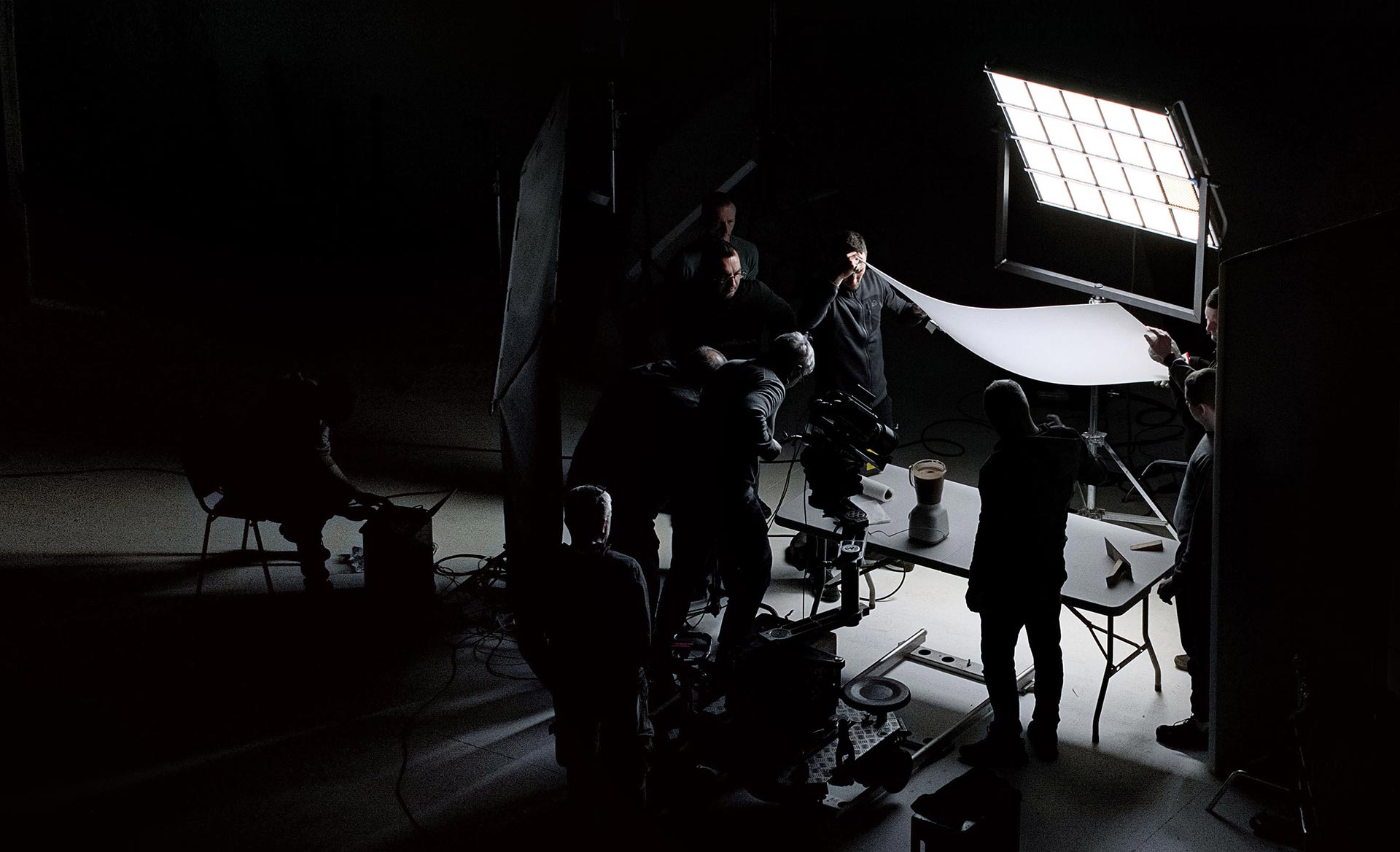Illumination is the cornerstone of every video production. It completely changes the looks, the moods and the overall quality of a scene. Understanding the principles behind lighting is crucial for any professional video. Learn here about the techniques of illumination and which equipment you need.
1. Check before recording – and seize control
Before you start filming, an appropriate preparation and planning is essential. Scout your location ahead of time. Consider the natural lighting and casting shadows – and be wary of changing weather conditions. Natural lighting can change in an instant through clouds. This can be a big issue when doing multiple shots of the same scene.
If you have a decent set of artificial lighting, it is best to avoid natural light altogether. Choose a shooting environment in which you have as much control over the light as possible!
2. Lighting for every occasion
1. Two- or three-point lighting
For scenarios like newscasts, corporate videos or interviews, a controlled setup is crucial. Three-point lighting is the standard setup for most basic filming, using artificial light from three directions. This configuration consists of the key light, fill light and back light.
The key light is the brightest, providing most of the light in the shot. It is generally placed in front of your subject, around 45 degrees above and 45 degrees to the right or left.
The fill light is a softer light. It is used to fill in or eliminate shadows on the subject’s face. It should be positioned to the opposite side of the key light. The intensity of the fill light is usually around half of the intensity of the key light.
The back light separates your subject from the background. Its goal: creating depth and detail in order to avoid a “flat looking shot” with no contrast. Place the light above and behind the subject. As it creates no visible shadows on the subject’s face, it can be a hard light.
While the back light adds a nice depth to your background, it is not necessarily essential. A two-point setup with key and fill light only, is adequate. Especially when you are just getting started with filming or have a limited budget.
2. Natural outdoor lighting
When shooting outdoors or in a place with large windows, you can use the sun’s natural light to illuminate your scene. This method is recommended for scenarios like vlogging, creative or travel videos.
However, natural light is really random and it is hard to achieve good results. The sun can be too intense, casting harsh shadows on your subject. Natural light moves and changes in intensity as the weather shifts and clouds pass by. If direct sunlight hits the front of the lens, flares are caused. To avoid those: Block the light from the lens by adjusting your angle, zoom in or out or consider a lens hood.
Natural light is very dependent on daytime. All your videos will look slightly different, depending on the day you choose for recording: It becomes difficult to achieve consistency across your shots.
But there are also benefits. Natural light can be the most beautiful kind of light. Filmmakers and photographers love the “golden hour” in early morning and late evening for its soft and flattering light. With careful planning and adjustments, try to make use of these unmatched natural light sources.
Many video makers use daylight as a variation of the three-point lighting setup. To do so, place your subject so that the sun provides your key light. Reflectors provide fill and back lights. At the “golden hour”, you can also flip the scenery by 180 degrees and position the in front of the sun, using it as back light.
In case you don’t have the equipment, natural lighting is an affordable method to lighten your scenes!
3. Choosing your lighting equipment
When it comes to lighting, there are plenty of options to consider based on budget and functionality. To spread unfiltered hard light evenly in order to create soft light, diffusion and reflectors are recommended. Use modifiers like umbrellas and soft boxes to make the light look more natural. Besides take colour temperature into consideration, as it has a significant impact on the mood you are trying to convey. When choosing your lights, be sure to choose one type of light to use throughout. Try not to mix colour temperatures.
1. Video lighting on a budget
Clamp lights are the most budget-friendly lights and can be purchased for around 20$ each+. These lights lack dimming control and diffusion but are very versatile and can be mounted in many ways.
Umbrellas, reflector and lighting kits can be found separately in the same range.
2. Mid-range lighting options
Kits for mid-range budget from $100-$500 offer more features, durability and lighting control. These studio lighting kits commonly use large florescent lights and include effective diffusion material as well as backdrops.
3. High-end lighting options
For professional video production you may prefer to assamble your own kit and select your lights, stands, filter and other equipment. But if you are after an all-in-one kit, there are many options too. Before investing in these lights, it’s a good idea to rent them locally or online and ensure they’ll suit your needs.
